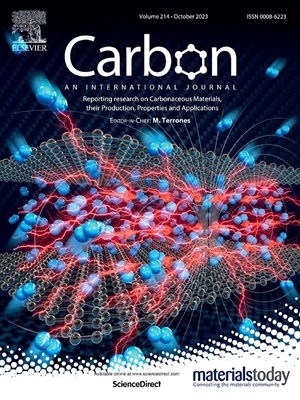Multilayer dual-embedded temperature-pressure synergized sensing of “breathing effect” in lithium-ion cells
IF 10.5
2区 材料科学
Q1 CHEMISTRY, PHYSICAL
引用次数: 0
Abstract
The “breathing effect,” as an inherent phenomenon exhibited by lithium-ion batteries (LIBs) during operation, can serve as a significant basis for identifying the battery's State of Charge (SOC) and State of Health (SOH). However, the existing single-parameter sensor is insufficient to elucidate the operating mechanism owing to the complex behavior of batteries. Herein, a high-performance carbon-based temperature-pressure thin-film (CTPF) sensor is fabricated based on carbon nanotube (CNT)/laser-induced graphene (LIG)/LIG-styrene ethylene butylene styrene (SEBS). The CTPF shows a wide sensing range (≤768 kPa for pressure, −20∼120 °C for temperature), fast pressure response (83 ms) and recovery (156 ms) speed, and good stability (above 5000 pressure cycles, above 2200 min temperature stage-cycles) with only 143 μm thickness. In addition, the CTPF shows good temperature-pressure decoupling performance attributable to its unique multilayer dual-embedded structure. By taking advantage of a cell sensing system (CSS), the “breathing effect” of a single cell is monitored and corresponds with the phase transition stages. A relationship between the module's SOC, C-rate, pressure and temperature is identified, and an anomaly phenomenon “gas evolution-redissolution” in the module is observed, which offers an additional method to monitor the SOC and SOH. Some extreme conditions are also studied for early damage warning. This work offers valuable insights and the foundation for future applications in wearable monitoring of lithium-ion batteries.

锂离子电池“呼吸效应”的多层双嵌入温压协同传感
“呼吸效应”是锂离子电池(LIBs)在使用过程中固有的一种现象,可以作为判断电池充电状态(SOC)和健康状态(SOH)的重要依据。然而,由于电池的复杂行为,现有的单参数传感器不足以阐明其工作机理。本文基于碳纳米管(CNT)/激光诱导石墨烯(LIG)/激光诱导石墨烯-苯乙烯乙烯-丁烯苯乙烯(SEBS)制备了高性能碳基温度-压力薄膜(CTPF)传感器。CTPF具有宽的传感范围(压力≤768 kPa,温度−20 ~ 120°C),快速的压力响应(83 ms)和恢复(156 ms)速度,以及良好的稳定性(超过5000压力循环,超过2200 min温度阶段循环),厚度仅为143 μm。此外,由于其独特的多层双嵌套结构,CTPF具有良好的温压解耦性能。利用细胞传感系统(CSS),监测单个细胞的“呼吸效应”,并与相变阶段相对应。识别了模块的SOC、c -速率、压力和温度之间的关系,并观察到模块中的“气体演化-再溶解”异常现象,这为监测SOC和SOH提供了一种额外的方法。并对一些极端条件进行了研究,以进行早期损伤预警。这项工作为锂离子电池可穿戴监测的未来应用提供了有价值的见解和基础。
本文章由计算机程序翻译,如有差异,请以英文原文为准。
求助全文
约1分钟内获得全文
求助全文
来源期刊

Carbon
工程技术-材料科学:综合
CiteScore
20.80
自引率
7.30%
发文量
0
审稿时长
23 days
期刊介绍:
The journal Carbon is an international multidisciplinary forum for communicating scientific advances in the field of carbon materials. It reports new findings related to the formation, structure, properties, behaviors, and technological applications of carbons. Carbons are a broad class of ordered or disordered solid phases composed primarily of elemental carbon, including but not limited to carbon black, carbon fibers and filaments, carbon nanotubes, diamond and diamond-like carbon, fullerenes, glassy carbon, graphite, graphene, graphene-oxide, porous carbons, pyrolytic carbon, and other sp2 and non-sp2 hybridized carbon systems. Carbon is the companion title to the open access journal Carbon Trends. Relevant application areas for carbon materials include biology and medicine, catalysis, electronic, optoelectronic, spintronic, high-frequency, and photonic devices, energy storage and conversion systems, environmental applications and water treatment, smart materials and systems, and structural and thermal applications.
 求助内容:
求助内容: 应助结果提醒方式:
应助结果提醒方式:


